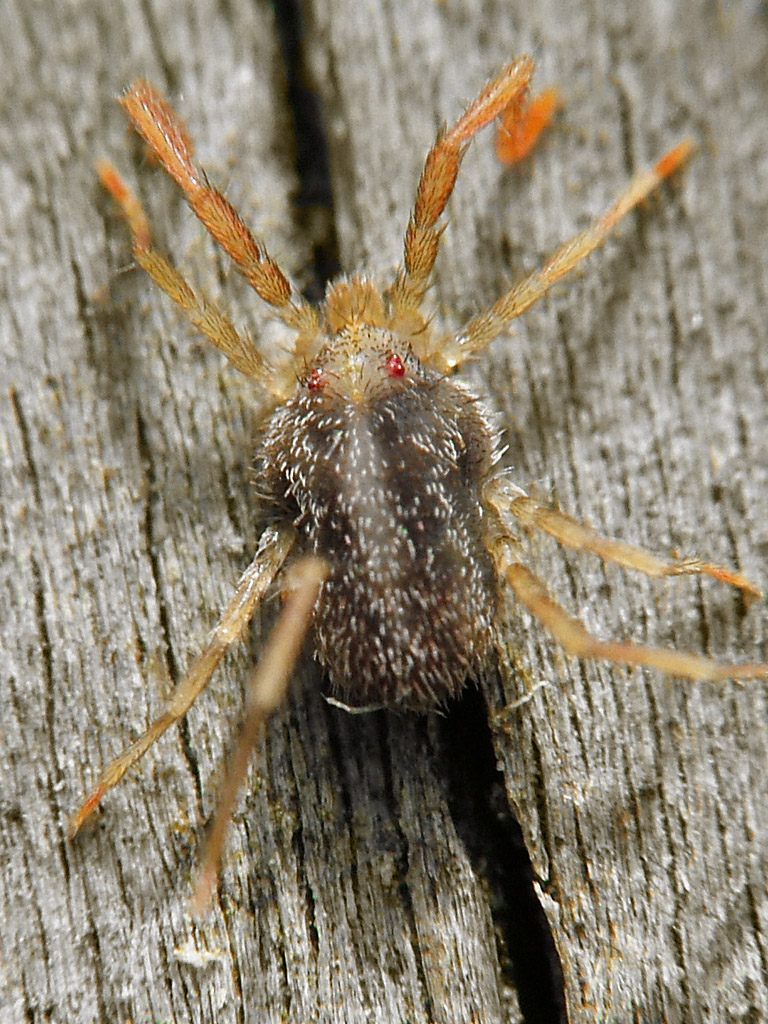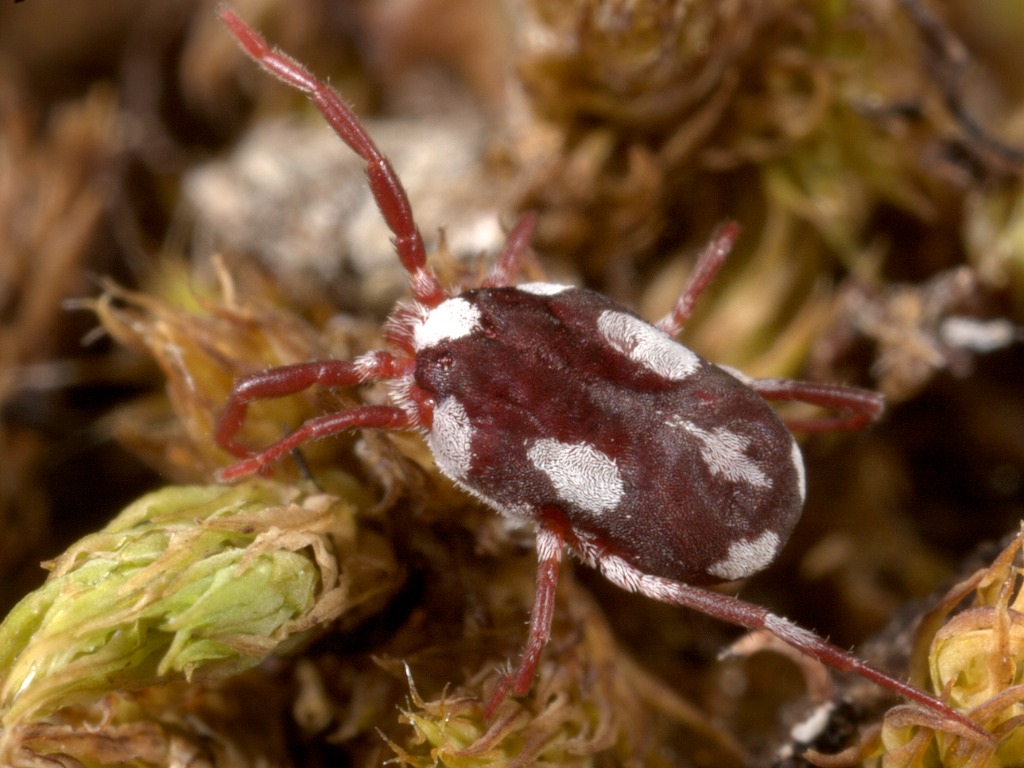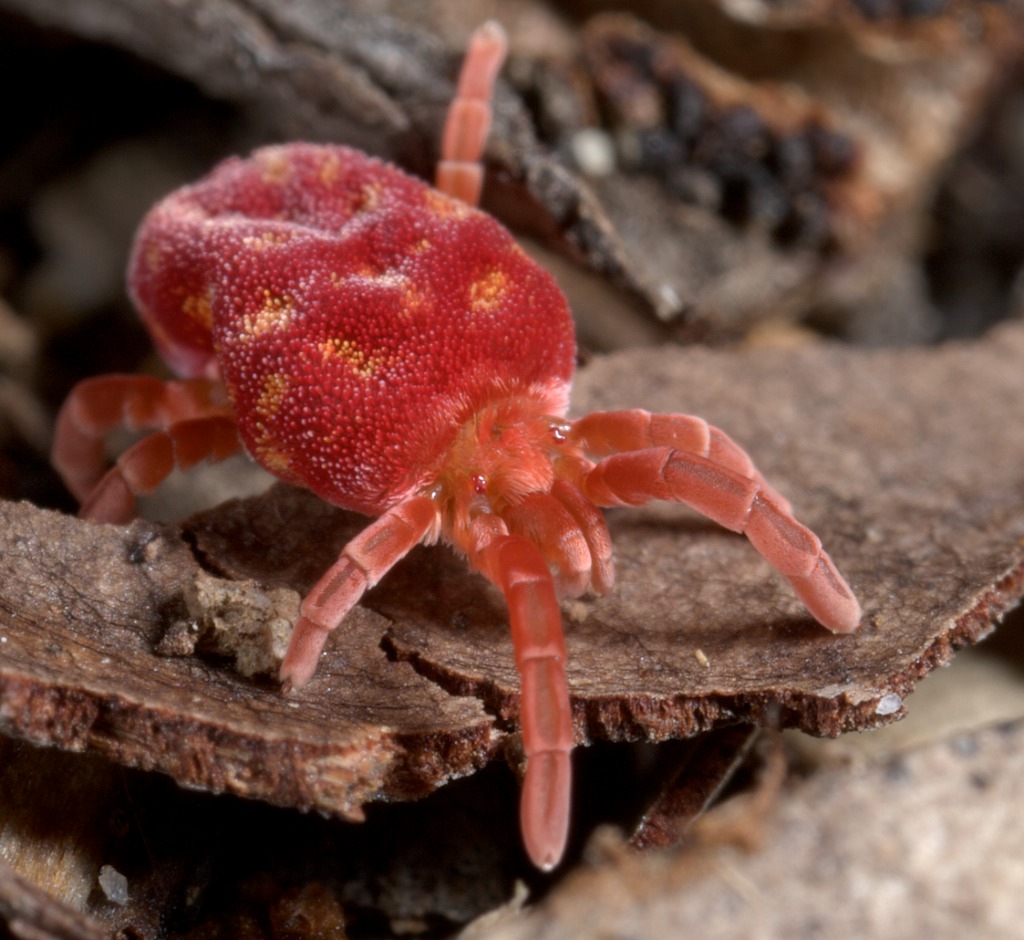Key to Australian Freshwater and Terrestrial Invertebrates
Phylum Arthropoda
Subphylum Chelicerata
Class Arachnida
Order Acariformes
Common name: mites
Overview
The Acariformes is the largest and most biologically diverse chelicerate order. They range in size from less than 1 mm up to 10 mm. Mites are distinguished from other arachnids by the complete absence of body segmentation. There is no division of the body into cephalothorax and abdomen. Instead, the mouthparts and associated sensory structures form a discrete anterior structure known as the gnathosoma. All the rest of a mite�s anatomical structures, including legs, central nervous system, ocelli (when present), and reproductive and digestive systems, are all fused into a single unsegmented body called the opisthosoma. Acariformes have a range of specialised modified sensory setae that distinguish them from the other mites (Parasitiformes and Opilioacariformes). Some setae have a layer of optically active chitin (actinochitin) that is birefringent (double refraction) under polarised light and used to detect vibrations. Other sensory setae unique amongst mites to the Acariformes include trichobothria (which detect airborne vibrations and currents), solenidia (found on the legs and detect vibrations and/or scents) and eupathidia (found on the palptarsus or first leg tarsus and probably detect scents).
Distribution and diversity
The Acariformes are the most diverse of the three orders of mites. There are over 30,000 described species in over 300 families, and total estimates of 400,000 to over 900,000 species. Australia has over 1,000 described species, but with many groups yet to be thoroughly studied, the true number will be vastly greater than this.
Life cycle
Mating is variable in the acariform mites. Some groups transfer sperm by direct coupling of the genital region, typically using a male organ (the aedeagus). Other groups indirectly transfer sperm by the male producing a spermatophore (sperm packet) which is either placed in the female�s genital opening using his legs or chelicerae or deposited on the substrate, after which the female picks it up in her genital opening. Parthenogenesis (offspring produced from unfertilized eggs) also occurs in some species. Eggs may be laid straight on to their food surfaces, such as plants, or oviposited into the substrate such as soil or particular host tissue. The first free-living stage that hatches from the egg is the larva which has only three pairs of legs, except for Eriophyidae (a family of plant parasites), whose members have only two pairs of legs in all active stages. Subsequently, the larva moults again becoming a first instar with four pairs of legs. Typically, several moults occur before it becomes an adult. Parasitic forms usually have some specialisation of their lifecycle associated with their hosts.
Feeding
Acariformes inhabit a very wide range of biotic and abiotic habitats and their feeding modes and food types reflect this. Many free-living species chew small particles of solid organic matter. These include herbivores and fungivores that feed on a wide diversity of plants and fungi, detritivores in soil and litter and predatory species that actively hunt and feed on insects and other mites on plants and in leaf litter and soil. Some have become associated with vertebrates such as dust mites, scab and mange mites and feather mites. Alternately, parasitic and many herbivorous species have piercing mouthparts adapted to feed on liquids (blood and/or other body fluids of animals or plant fluids).
Ecology
Acariformes occur across practically all terrestrial and aquatic ecosystems and, accordingly, are of considerable ecological importance. They include free-living detritivores, herbivores and predators that inhabit soil, litter, dung, carrion, plant foliage and fresh and salt water to those species that are parasitic on vertebrates and insects. Acariform mites are also the most economically important of the chelicerates. Many herbivorous species are important plant pests and are well-known for the economic damage they cause, e.g. the red-legged earth mite (Halotydeus destructor), spider mites and eriophyid mites. Several infest stored food and have the potential to damage stockpiled grain on an industrial scale. Parasitic species cause animal and livestock diseases such as scabies, scaly leg of chickens and several types of mange in domestic animals. Many are also medically important for humans, e.g. house dust mites cause allergy and asthma while others are potentially important disease vectors. However, many species have also proven beneficial. Predatory and parasitic species contribute to the regulation of insects and other mite populations and some have proven beneficial in the biological control of pest mites and insects in agricultural systems. Several herbivorous species have also been used successfully for the biological control of weeds. Those species that feed on dead plant material and the associated fungi the soil and leaf litter are a vital part of the detritus food web, important for plant breakdown and maintaining soil fertility.










